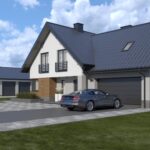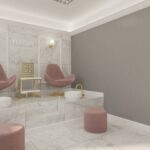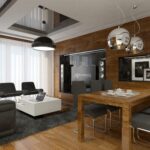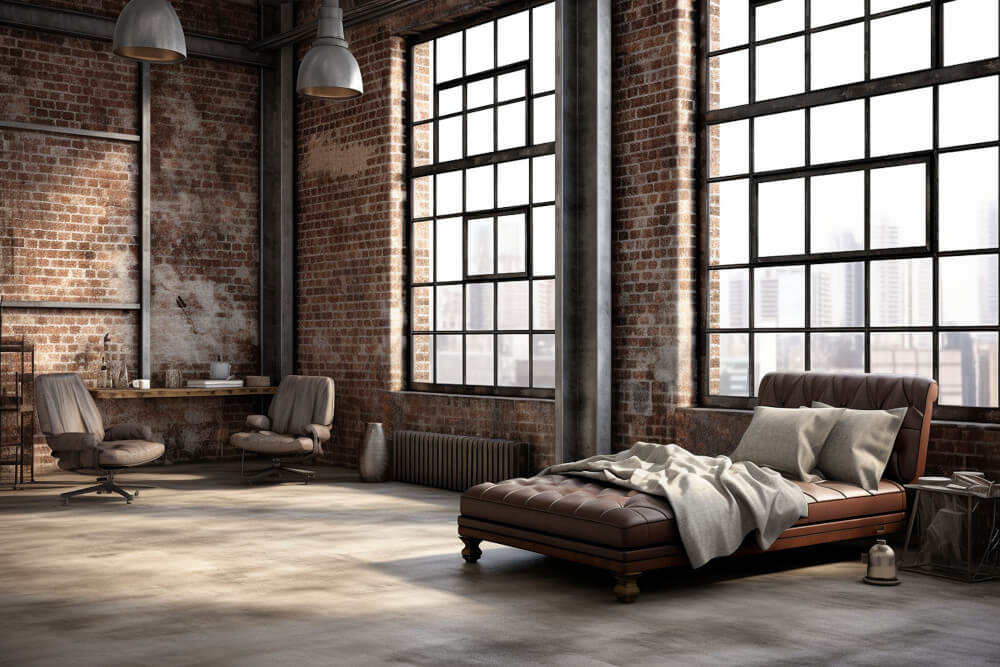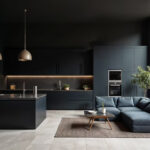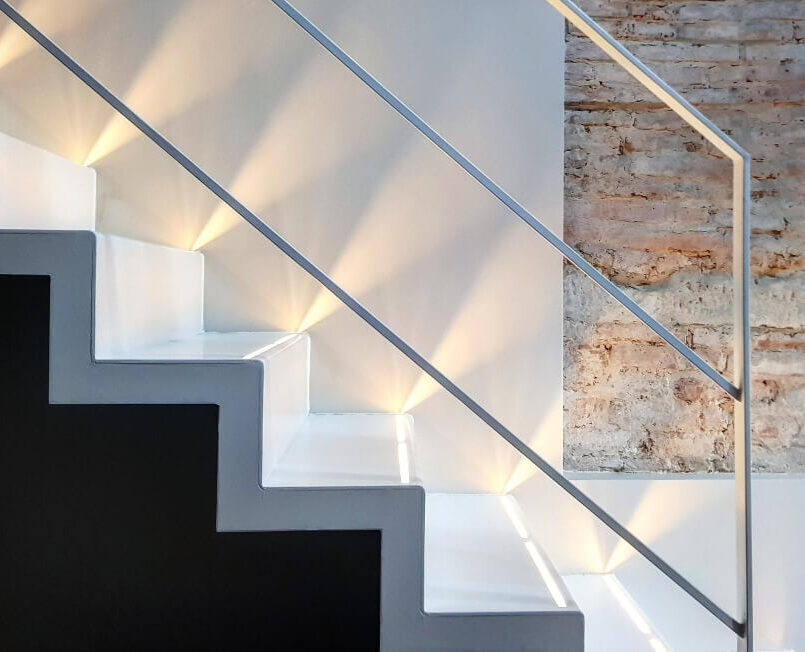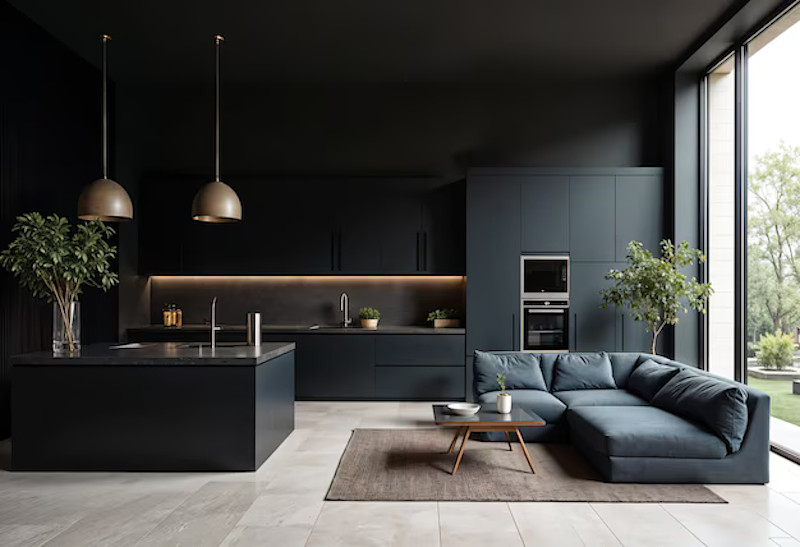Styles in interior design
1. Traditional
Traditional design never goes out of style. This style features classic elements that have stood the test of time, creating a warm and inviting atmosphere. Large plush sofas, ornate patterns on rugs and curtains, and rich, warm color palettes. Traditional homes often feature elaborate architectural details, carefully selected art, and mood lighting. The result is a space that feels both comfortable and subtly formal, perfect for those who appreciate enduring beauty.
2. Rustic
The rustic style celebrates the beauty of natural materials and the character of beloved objects. Rustic interiors have elements such as old and worn wooden furniture and floors, leather loungers, stone fireplaces, pastel, natural colors with dominant white and beige, and handmade accessories. There are also often beamed ceilings, wall paneling made of aged boards, wooden doors, stairs and balustrades, and a tiled stove. The whole creates a warm and inviting atmosphere.
3. Maximalism
This style involves layering colors, patterns, and textures to create a vibrant, eclectic space. Maximalist interiors are filled with collected art, bold wallpapers, and an array of interesting objects. While it may seem chaotic at first glance, successful maximalist design requires a thoughtful approach to creating cohesion amidst abundance. The key is to find common threads in color, shape, or motif to tie together the disparate elements.
4. Minimalism
On the opposite end of the spectrum from maximalism is minimalism, which follows the principle of “less is more.” Such spaces are characterized by clean lines, neutral color palettes, and a focus on essentials. Every item in a minimalist home serves a purpose, creating an uncluttered, calming environment. While some may perceive minimalism as cold or stark, thoughtful design can create warm, inviting spaces that offer a sense of clarity and peace.
5. Modern
Contemporary interior design is often associated with urban living, but it can create a striking look in any setting. Characterized by minimal embellishment and a focus on function, modern interiors prioritize simplicity and elegance. Materials like glass, metal, and smooth surfaces dominate, while the color palette leans toward cool tones with the occasional bold accent. To keep modern spaces from feeling cold, comfortable furniture and soft textiles are used to add warmth and texture. The result is a space that feels sophisticated and uncluttered.
6. Scandinavian
Scandinavian style is rooted in the Nordic concept of “hygge,” which emphasizes comfort, coziness, and well-being. This philosophy encourages the creation of spaces that are both functional and inviting. Key features of this style include soft textures, light color palettes, and an emphasis on natural materials like wood and wool. Scandinavian minimalism is ideal for those who value warmth while keeping spaces clutter-free and practical.
7. Loft (industrial)
Loft style homes are characterized by an open floor plan. They feature high ceilings that showcase an industrial aesthetic. Often, these interiors come from buildings such as factories and warehouses that have been converted into living spaces. The loft style has also gained popularity in newly constructed homes. Walls are minimized to create an open space that is beneficial for many functions. The design of loft style homes includes industrial materials such as concrete floors, metal products, and brick walls. The interiors are very unique and stylish, combining both modern principles and industrial elements.
8. Glamour
Glamour style is glitz, luxury and shine. It arouses a lot of controversy but seduces with its charm. It is atmospheric and elegant, tempting with the richness of soft fabrics and shiny accessories. An interior decorated in glamour style is to be full of splendor. Glamour style is associated with Hollywood and the homes of stars. When decorating an apartment in this style, however, you should maintain moderation with luxury and shine because it can be very easy to overdo it.
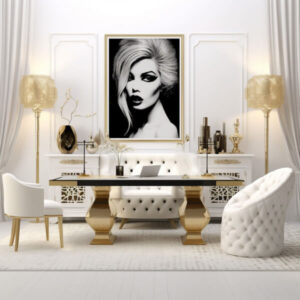
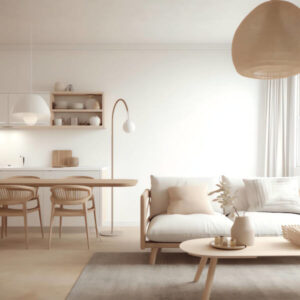
9. Art Deco style
The Art Deco style was popular mainly in the interwar period. It refers to past eras, but on the other hand it is strongly based on modernity. A characteristic element of interiors decorated in the Art Deco style are antiques woven into the decor, which are a praise of tradition and culture. Art Deco furniture is luxury, but not as ostentatious as in the case of the glamour style – it is classic, elegant and perfectly refined details.
10. Hampton Style
Hampton style interiors are inspired by seaside climates (The Hamptons are picturesque seaside towns near New York). Hampton style is a combination of natural, casual and comfortable decor with a touch of luxury and opulence. These interiors are supposed to promote peace and relaxation, which is why they lack loud colors and distracting patterns. Hampton style is harmony, peace and order.
11. Eclectic style
Eclectic arrangements are a solution for people who… don’t know what style to choose. It’s a real mix-up! Different colors, contradictions, mutually exclusive interior design styles, seemingly incompatible materials. As it turns out, however, there is a method to this madness and properly selected elements can create a coherent and interesting whole. Contrary to appearances, when decorating an apartment in an eclectic style, you need to show a great sense of taste, because it balances on the border between kitsch and stylish chaos.
12. Boho style
In some ways, boho style can be compared to eclecticism – here, too, freedom reigns in the selection of patterns and colors, as well as nonchalance in the composition of accessories. Boho style is colorful, fanciful, and casual. At first glance, it may seem like total chaos, but after a while, a perceptive eye will notice subtle connections in colors or patterns. And that is exactly what boho is all about – controlled madness.

